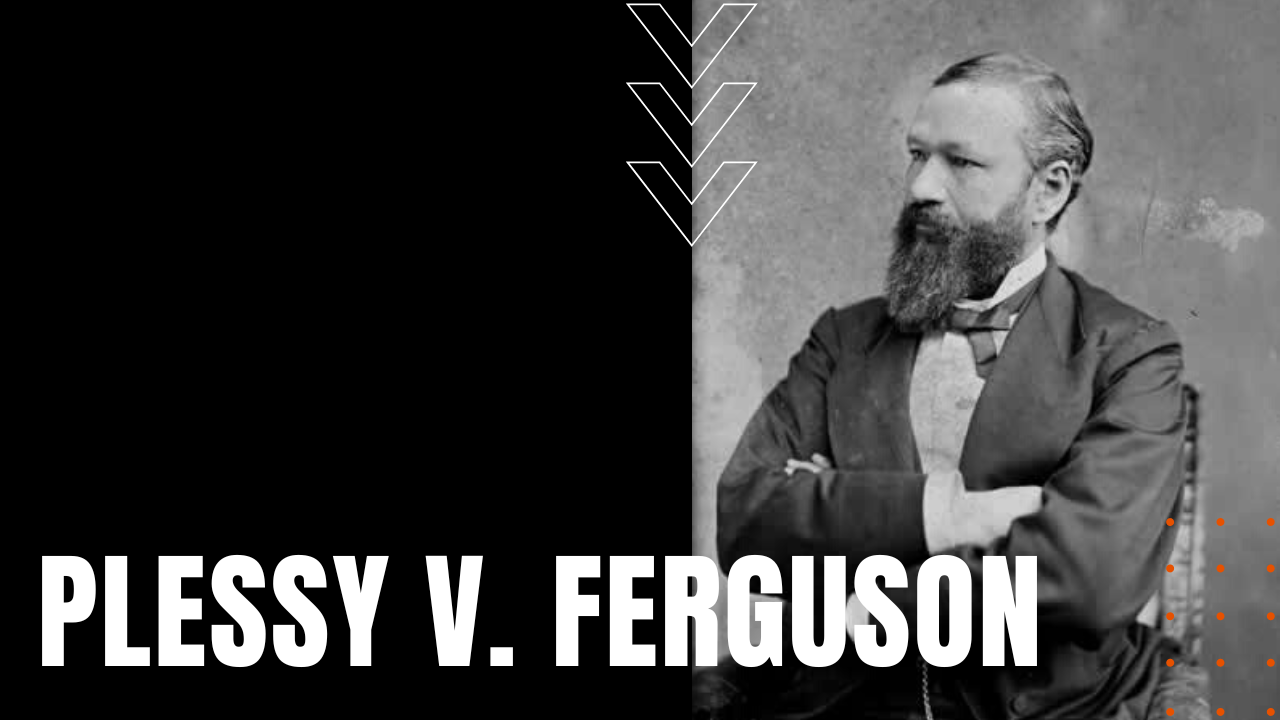Plessy v Ferguson

After the Compromise of 1877 ended post-Civil War Reconstruction efforts in the South, Southern Blacks saw the promise of equality granted to them by the 13th, 14th and 15th Amendments crushed under a rising tide segregationist Black Codes. Much like the Freedom Riders of 1961, who used whites-only facilities in bus terminals as a stress test to the Supreme Court’s 1960 Boynton v. Virginia ruling declaring segregation inside interstate transportation facilities unconstitutional,
Segregation Ramps Up
after Louisiana mandated segregated railroad cars in 1890, backed by other pre-civil rights movement activists, Homer Adolph Plessy agreed to set out by train to challenge the new law, boarding a whites-only rail car on June 7th, 1892, departing New Orleans for the sleepy North Shore community of Covington Louisiana. Despite his mixed-race ethnicity—Plessy claiming he was seven-eighths Caucasian—when a conductor insisted he leave the car, Plessy refused, leading to his prompt arrest and imprisonment.
Convicted & Fined
Convicted by a New Orleans court for violating state law, Plessy filed a petition against the Honorable John H. Ferguson, the presiding judge over his trial, claiming that the state’s 1890 law violated the Equal Protection Clause of the 14th Amendment, and as segregationist laws continued to accelerate throughout the Jim Crow South—including congressional nullification of many Reconstruction-era laws—Plessy’s persistent tenacity elevated his case to the Supreme Court.
Separate but Equal Deem Constitutional
On May 18th, 1896, the Supreme Court at last issued its ruling on Plessy v. Ferguson, declaring that separate-but-equal facilities were indeed constitutional on intrastate railroads, insisting that the protections laid down by the 14th Amendment applied solely to political and civil rights freedoms, such as voting and jury duty, yet had no bearing over, as the justices called it, “social rights” freedoms.
Justice Brown Weighs In
Addressing Plessy’s argument that segregated Black rail cars were necessarily inferior, Justice Henry Brown wrote that “We consider the underlying fallacy of (Plessy’s) argument to consist in the assumption that the enforced separation of the two races stamps the colored race with a badge of inferiority. If this be so, it is not by reason of anything found in the act, but solely because the colored race chooses to put that construction upon it,” making Plessy v. Ferguson, an open season invitation for white racism in America.
